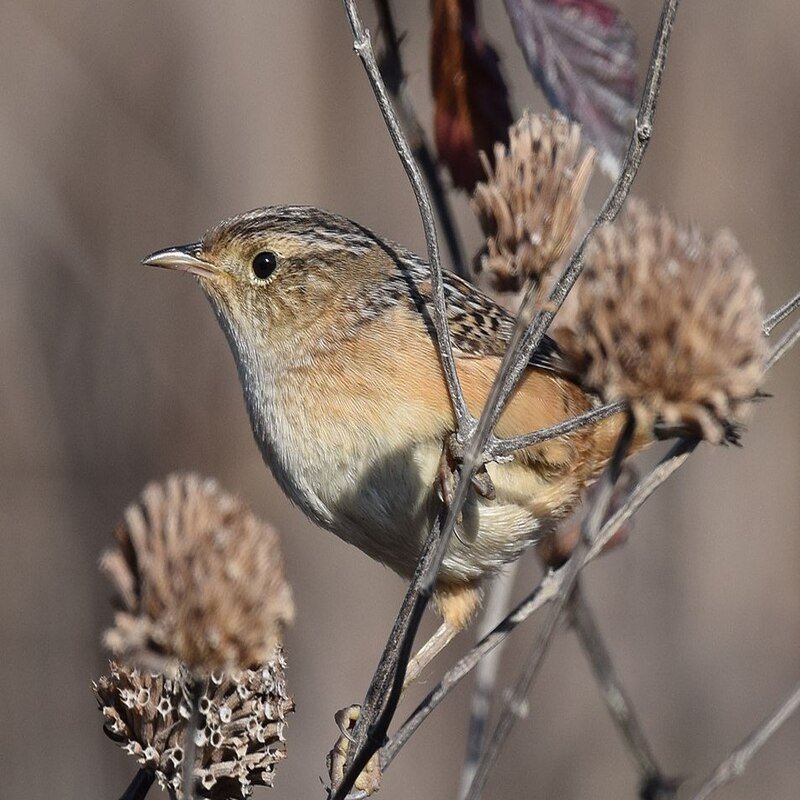Cistothorus stellaris, know to be a sedge wren, is a small Troglodytid bird in the family of Troglodytidae. North America has a large supply. Wet grasslands and meadows are home to this insect-eating bird that nests in tall grass. A former is conspecific with the non-migratory grass wren of Central and South America.
Quick Overview: Cistothorus Platensis – Sedge Wren
Body size: Around 4.5 in (11 cm) and a weight of 9g (0.3 oz)
Main colors: White, Brown,
Range: Southeastern United States
Migratory Bird: Yes
Best time of the year to see in the U.S.: January, February, June, July, August, September, December
Conservation Status: Least Concern
Sedge Wren Description
Sedge wrens are small, streaked wrens. Their bellies and throats are white, with soft brown sides, breasts, and tails. The tails are barbed. Males and females have the same plumage all year, though males may be slightly larger in some features.

Size
These birds have a length of 4.5 in (11 cm) and a weight of 9g (0.3 oz). Their wings could range 5-5.6 in (14-15cm)
Feeding
It is an invertebrate, eating insects and spiders. Due to their cryptic habits, little is known about their diet or foraging habits, but a few observations suggest they forage near grass and sedge roots.
Habitat
Sedge wrens inhabit sedge meadows and other wet grasslands, such as a pond, marsh, bog, and coastal wetlands. They are found in similar agricultural areas such as hayfields and early successional oldfields.
Behavior
North American sedge wren populations are migratory. In April and May, northern populations migrate northward. Some of these populations are nomadic, migrating north in the spring, then south in the late summer to breed.
Cistothorus platensis Scientific Classification
- Kingdom: Animalia
- Phylum: Chordata
- Subphylum: Chelicerata
- Class: Aves
- Order: Passeriformes
- Family: Troglodytidae
- Genus: Cistothorus
- Species: Cistothorus stellaris
Best time of the year to see
The best time to see these birds in the United States are during summer (June to September) and winter (December to February).
Distribution of the Sedge wren in the USA
Sedge wrens winter in the southeastern United States, including the Gulf states and eastern Texas, and northeastern Mexico. Parts of Mexico have disjunct resident populations. North-breeding populations occur in all Great Lakes states except Minnesota and southern Alberta, Saskatchewan, and Manitoba. In suitable habitats, breeding occurs in Mexico, Central America, and South America.
The Sedge wren can be found in the following states in the United States – Alabama, Arkansas, Connecticut, Delaware, Florida, Georgia, Indiana, Iowa, Kansas, Kentucky, Louisiana, Maine, Maryland, Massachusetts, Michigan, Mississippi, Missouri, Nebraska, New Hampshire, New Jersey, New York, North Carolina, North Dakota, Ohio, Oklahoma, Pennsylvania, Rhode Island, South Carolina, South Dakota, Tennessee, Vermont, Virginia, West Virginia, and Wisconsin.

